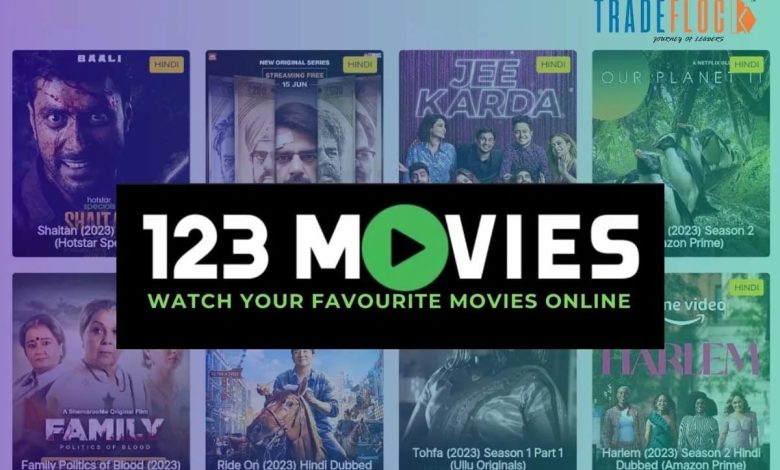
Table of Contents
ToggleThe landscape of film distribution has undergone a seismic shift over the past couple of decades, fundamentally altering how audiences consume films. One of the most significant developments in this arena is the rise of streaming platforms. As technology has advanced, so too have the ways in which filmmakers and studios deliver their content to viewers. From the dominance of traditional cinemas to the burgeoning world of digital streaming, we explore how this transition has reshaped the film distribution model and its implications for filmmakers, audiences, and the industry at large.
The Traditional Model
For much of the 20th century, film distribution revolved around a well-established model: theatrical releases. Studios would invest heavily in creating films and subsequently roll them out to cinemas. The box office was the primary revenue stream, often determining a film’s success. This model relied on extensive marketing campaigns, opening weekend strategies, and a structured timeline that saw films gradually move from theaters to home video releases.
However, this approach also had its drawbacks. Not every film could secure a wide release, and independent filmmakers often found themselves struggling to get their work seen by a broader audience. The reliance on box office performance also pressured studios to produce films that would cater to mass audiences, frequently sidelining more niche or experimental projects.
The Emergence of Streaming
The advent of the internet brought about a transformative shift in how films were distributed. In the late 1990s and early 2000s, companies like Netflix began to experiment with online rental services, allowing consumers to watch films without leaving their homes. This was a precursor to the eventual rise of subscription-based streaming services.
As broadband internet became more widely accessible, streaming services gained traction. By the 2010s, platforms like Hulu, Amazon Prime Video, and, notably, Netflix had established themselves as formidable players in the film distribution landscape. This evolution not only offered consumers unprecedented access to a vast library of films but also disrupted the traditional release window.
Impact on Distribution Strategies
With the rise of streaming, filmmakers and studios had to rethink their distribution strategies. The concept of a “theatrical window”—the period during which a film is exclusively shown in cinemas—began to shrink. Many studios opted for simultaneous releases on streaming platforms and in theaters, often referred to as “day-and-date” releases. This strategy allowed audiences to choose how they wanted to experience a film, whether it be in a theater or from the comfort of their own homes.
For independent filmmakers, this shift was particularly significant. No longer were they solely reliant on theatrical releases to reach their audience. Platforms like 123 Moviess and others allowed indie films to gain visibility without the extensive marketing budgets typically required for a theatrical rollout. This democratization of access has enabled a more diverse array of voices and stories to be told, enriching the cinematic landscape.
Changing Audience Behavior
As streaming services became more popular, audience behavior began to shift dramatically. The convenience of on-demand viewing has led to a decline in traditional cinema attendance. Audiences no longer need to commit to a specific time or place to enjoy a film; instead, they can watch it whenever they choose. This has changed the way films are marketed and distributed, with studios focusing more on creating buzz through social media and online platforms.
Moreover, binge-watching has become a cultural phenomenon, influencing how films are produced. Rather than adhering to the traditional two-hour runtime, filmmakers are now exploring new storytelling formats, including limited series and multi-part narratives. This trend has led to a blurring of the lines between film and television, further complicating traditional distribution models.
The Role of Data Analytics
Another aspect of the streaming revolution is the power of data analytics. Streaming platforms gather extensive data on viewer preferences, allowing them to make informed decisions about what content to produce and promote. This analytical approach has led to the rise of targeted marketing strategies, helping studios reach their desired demographics more effectively.
For instance, when a platform identifies a trend in viewer preferences—such as a rising interest in horror films—it can greenlight projects that align with that demand. This data-driven approach can lead to a more efficient allocation of resources and a greater chance of success for new films.
Challenges and Opportunities for Filmmakers
While streaming has opened new avenues for filmmakers, it has also presented challenges. The sheer volume of content available on platforms like 123 Moviess and others can make it difficult for individual films to stand out. With millions of titles available at viewers’ fingertips, the competition for attention is fierce.
Additionally, revenue models have changed. Many filmmakers once relied heavily on box office earnings; now, they may receive a flat fee from streaming services or a share of subscription revenue. This can create uncertainty for budgets and profit margins, particularly for independent creators who may not have the same negotiating power as major studios.
Despite these challenges, the opportunities are immense. Streaming platforms have become incubators for creativity, allowing filmmakers to experiment with new formats, genres, and storytelling techniques. Projects that might have struggled to find a home in traditional theaters can now find an audience on streaming services, fostering a more diverse and innovative film culture.
The Globalization of Film Distribution
Streaming has also played a pivotal role in the globalization of film distribution. Films from around the world are now easily accessible to global audiences. This has led to a greater appreciation for international cinema, breaking down cultural barriers and allowing diverse narratives to flourish.
As platforms expand their reach, films that may have been relegated to niche audiences can gain international acclaim. For example, movies that were once considered regional hits can now find audiences far beyond their borders, amplifying their impact and paving the way for future projects.
Conclusion
The rise of streaming has irrevocably changed the film distribution landscape. From altering traditional release strategies to empowering independent filmmakers and influencing audience behavior, the impact is profound and far-reaching. While challenges remain, the opportunities for creativity and innovation are equally significant.
As we look to the future, it’s clear that platforms like 123 Moviess and others will continue to play a vital role in how films are consumed and distributed. The industry must adapt to these changes, embracing new technologies and evolving audience preferences. In this ever-changing environment, one thing is certain: streaming has not just changed film distribution; it has redefined it, opening up new worlds of possibility for filmmakers and audiences alike.
Read More : Click Here








